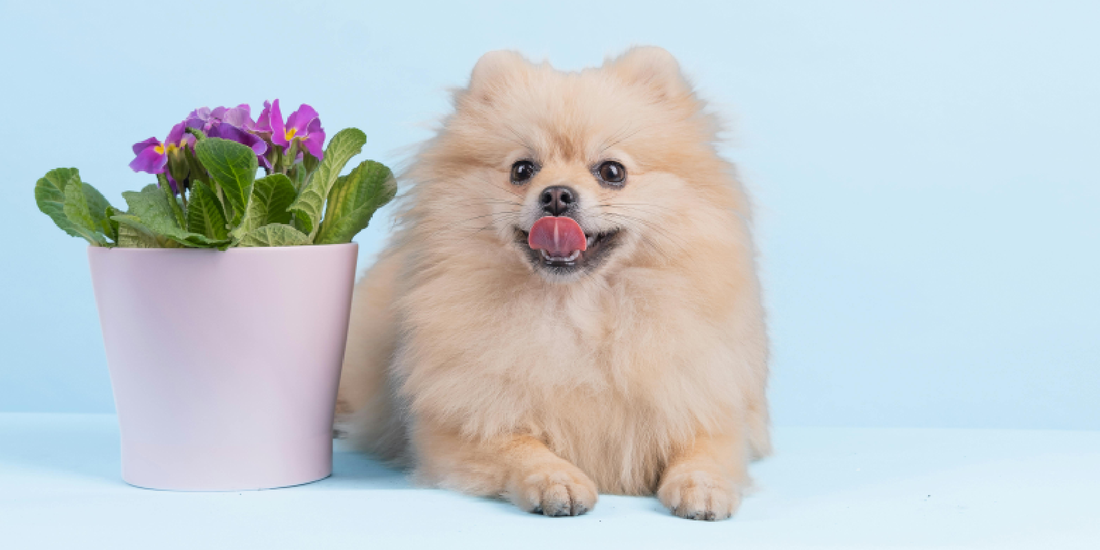
Plant Toxicity Guide for Homes with Pets
Share
Adding plants to a living space is one of the easiest ways to create a fresh and vibrant home. Indoor greenery improves air quality, reduces stress, and enhances design aesthetics. Yet for households with pets, every new plant also introduces a question of safety. While many plants are harmless, others can be highly toxic to cats, dogs, rabbits, or birds. Unfortunately, some of the most popular decorative plants—like lilies or pothos—are among the most dangerous.
The goal of this guide is to provide a comprehensive reference for pet owners. We will cover the most toxic houseplants, safe alternatives, the science behind toxicity, symptoms of poisoning, and preventive strategies. Finally, we will explore how pet-friendly design choices, such as the amoyls VerdantGlow S-Shaped 8-Tier Plant Shelf with Grow Lights, can help households enjoy greenery without compromising pet safety.
Why Plant Toxicity is a Hidden Household Hazard
Curiosity in Cats and Dogs
Pets explore their environment through taste and smell. A trailing vine, a leaf moving in the breeze, or fallen petals are irresistible to curious animals. Cats in particular are natural climbers, which means they can access high shelves where plants are kept.
Silent Dangers
Not all toxic reactions appear immediately. Some toxins build up in organs such as the liver or kidneys, causing delayed symptoms that owners may not connect to plant exposure. For example, lily ingestion in cats may lead to kidney failure within hours, often before the owner realizes anything is wrong.
The Cost of Ignorance
Trips to the emergency veterinarian for suspected poisoning can cost hundreds of dollars. Beyond the financial strain, there is the emotional toll of knowing a preventable plant choice endangered a beloved pet.
The Science of Plant Toxicity
Plant toxicity is caused by chemical compounds naturally produced for defense against herbivores. These compounds may repel insects, prevent overgrazing, or deter mold growth. Unfortunately, the same protective mechanisms can harm domestic animals.
Common toxic compounds include:
- Calcium oxalates → Found in pothos and peace lilies; cause burning, drooling, and oral irritation.
- Saponins → Present in aloe vera; lead to gastrointestinal upset and lethargy.
- Cyanogenic glycosides → Found in some ornamental plants; may cause breathing difficulty and seizures.
- Alkaloids → Potent chemicals in plants like cycads; can damage liver and nervous system.
The degree of toxicity depends on the amount ingested, the animal’s size, and its metabolism. Cats are particularly vulnerable because their livers lack certain enzymes to neutralize toxins.
Toxic Houseplants Every Pet Owner Should Avoid
1. Lilies (Lilium and Hemerocallis species)
- Toxic to: Cats (extremely), dogs (less severe).
- Effect: Kidney failure in cats after even small exposure.
- Symptoms: Vomiting, depression, loss of appetite, dehydration.
2. Aloe Vera
- Toxin: Saponins and anthraquinones.
- Symptoms: Vomiting, diarrhea, tremors, lethargy.
3. Pothos (Epipremnum aureum)
- Toxin: Insoluble calcium oxalates.
- Effect: Mouth irritation, drooling, vomiting, difficulty swallowing.
4. Peace Lily (Spathiphyllum)
- Note: Not a true lily but still toxic.
- Symptoms: Oral irritation, drooling, pawing at face, vomiting.
5. Sago Palm (Cycas revoluta)
- Severity: Among the most toxic plants for pets.
- Compound: Cycasin, which causes severe liver damage.
- Outcome: Even one seed can be fatal.
6. Dieffenbachia (Dumb Cane)
- Hazard: Popular office plant.
- Symptoms: Intense oral burning, swelling, vomiting, difficulty breathing.
7. Philodendrons
- Toxin: Calcium oxalates.
- Symptoms: Drooling, gagging, vomiting.
8. Oleander
- Danger: Highly poisonous to all animals, even humans.
- Compound: Cardiac glycosides.
- Effect: Heart rhythm disturbances, potentially fatal.
Pet-Safe Alternatives
The good news is that many plants are entirely safe for cats and dogs. These provide beauty and air-purifying benefits without risk.
- Spider Plant (Chlorophytum comosum) → Hardy, non-toxic, and great for beginners.
- Areca Palm (Dypsis lutescens) → Pet-safe tropical plant.
- Calathea (Prayer Plant) → Vibrant foliage patterns, safe for all pets.
- Boston Fern (Nephrolepis exaltata) → Adds lush greenery without toxicity.
- Bamboo Palm (Chamaedorea seifrizii) → Tall, elegant, and safe.
- Cast Iron Plant (Aspidistra elatior) → Extremely resilient, non-toxic.
By designing a collection of these pet-friendly plants, you can create a thriving indoor jungle without risk.
How Toxicity Manifests in Different Pets
- Cats: Often groom themselves after brushing against leaves, ingesting toxins indirectly. Particularly vulnerable to lilies.
- Dogs: More likely to chew large amounts, leading to higher toxin exposure.
- Rabbits and rodents: Small body size means even minor exposure can cause severe illness.
- Birds: Sensitive respiratory systems make them prone to poisoning from both ingestion and airborne compounds.
Recognizing Symptoms of Plant Poisoning
Warning signs may include:
- Sudden drooling or foaming at the mouth.
- Vomiting, diarrhea, or constipation.
- Loss of appetite.
- Tremors or seizures.
- Labored breathing.
- Swelling of lips, tongue, or throat.
Immediate action: Call your veterinarian or the ASPCA Animal Poison Control Center. Bring a sample of the plant your pet ingested for accurate diagnosis.
Preventing Plant-Related Accidents
- Research before buying → Always cross-check plant species on toxicity lists.
- Use vertical design solutions → Multi-tier shelving like the amoyls VerdantGlow S-Shaped 8-Tier Plant Shelf with Grow Lights allows safe placement beyond reach.
- Provide alternatives → Offer cat grass or catnip for cats, chew toys for dogs.
- Supervise interactions → Observe pets in rooms with plants, especially new additions.
- Educate family members → Ensure children and visitors know which plants are off-limits.
Designing a Pet-Safe Indoor Garden
The amoyls VerdantGlow S-Shaped 8-Tier Plant Shelf with Grow Lights combines style with function. For pet households, its design offers:
- Vertical safety: Place toxic plants high, safe plants low.
- Built-in lighting: Grow pet-safe species even in dark apartments.
- Organized display: Dedicate lower levels to ferns and spider plants; reserve upper levels for decorative but risky varieties.
- Space efficiency: Perfect for small homes where both pets and greenery share limited square footage.
Conclusion
Creating a beautiful home filled with greenery is possible even when pets are part of the family. By learning about plant toxicity, choosing non-toxic species, and arranging plants thoughtfully, you can avoid accidents.
With the help of solutions like the amoyls VerdantGlow S-Shaped 8-Tier Plant Shelf with Grow Lights, pet owners don’t need to choose between design and safety. A healthy, vibrant, and stylish indoor garden can coexist with the playful energy of cats and dogs—without risk.
